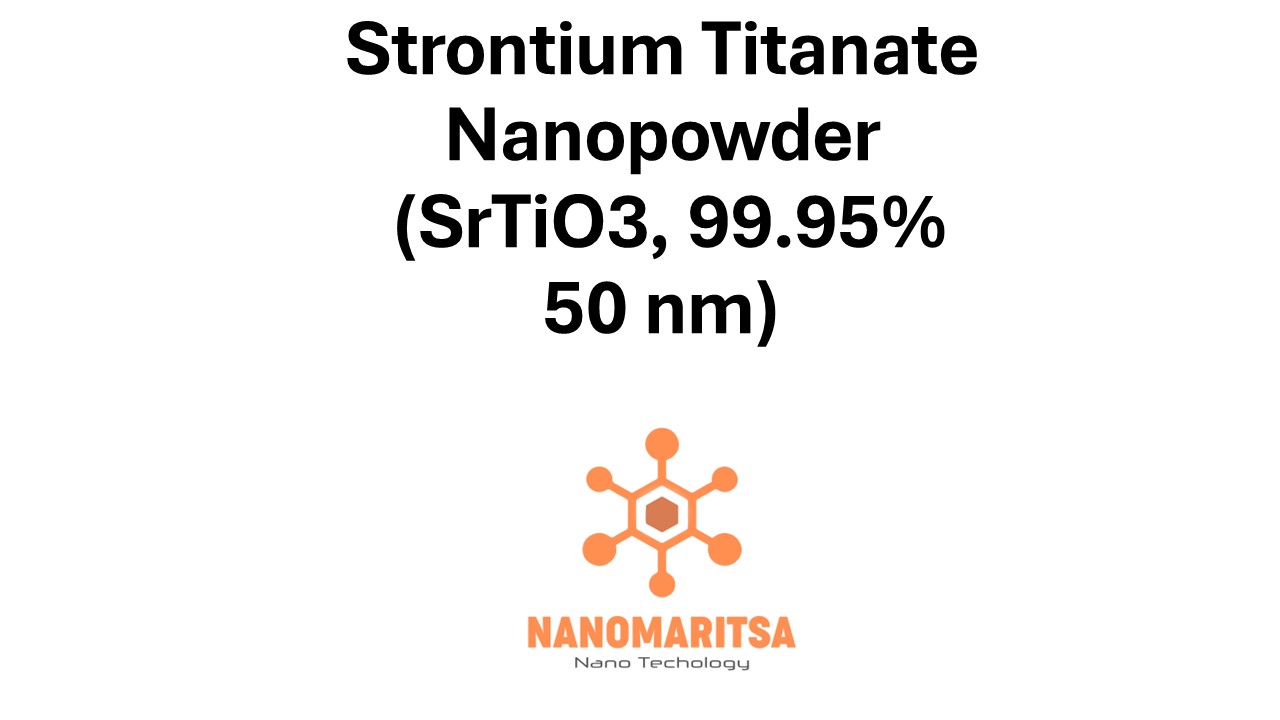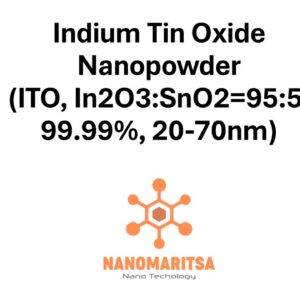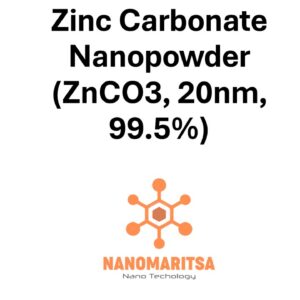Strontium titanate (SrTiO₃) nanopowder, with a purity of 99.95% and a particle size of 50 nanometers, is a high-performance ceramic material renowned for its exceptional dielectric properties, thermal stability, and optical transparency. Its nanoscale dimensions and high purity make it an ideal material for applications in electronics, energy storage, photonics, and advanced ceramics. Strontium titanate’s unique combination of electrical, optical, and mechanical properties positions it as a key material in cutting-edge technologies.
Composition and Structure
SrTiO₃ (Strontium Titanate):
Strontium titanate is a perovskite-structured ceramic material that exhibits excellent dielectric properties, making it indispensable in electronic and optical applications. The nanoscale form enhances its surface area and reactivity, improving performance in composite systems and functional devices.
Purity (99.95%):
The high purity ensures minimal impurities, which is critical for maintaining consistency and reliability in precision applications, including electronics, photonics, and energy systems.
Particle Size (50 nm):
The fine particle size of 50 nanometers provides a high surface area, enhancing reactivity, sintering properties, and integration into advanced composites.
Properties
Exceptional Dielectric Constant:
SrTiO₃ exhibits a high dielectric constant, making it ideal for capacitors, tunable microwave devices, and energy storage systems.
Thermal Stability:
The material retains its structural and functional integrity at high temperatures, enabling its use in demanding environments such as aerospace and power systems.
Optical Transparency:
Strontium titanate demonstrates excellent optical transparency in the visible and infrared ranges, making it suitable for advanced photonic and optical applications.
Semiconducting Properties:
SrTiO₃ exhibits tunable semiconducting properties, enabling its use in transistors, sensors, and other electronic devices.
Photocatalytic Activity:
Its ability to absorb light and catalyze chemical reactions makes it valuable in photocatalysis for environmental and energy applications.
Applications
Electronics and Energy Storage:
SrTiO₃ is widely used in the production of multilayer ceramic capacitors (MLCCs) and dielectric materials for high-frequency electronic devices. Its high dielectric constant enhances energy storage and discharge efficiency.
Photonics and Optoelectronics:
The optical properties of SrTiO₃ make it suitable for photonic devices, infrared optics, and advanced sensors. It is also employed in lasers and optical modulators.
Advanced Ceramics:
SrTiO₃ nanopowder is used in advanced ceramics to improve mechanical strength, thermal resistance, and electrical performance, making it suitable for aerospace and industrial applications.
Environmental Remediation:
The photocatalytic activity of SrTiO₃ makes it effective in degrading organic pollutants and splitting water for hydrogen production, contributing to sustainable energy and environmental cleanup.
Semiconductors:
Strontium titanate is utilized in semiconductor devices such as transistors and field-effect devices, where its tunable electronic properties enhance device performance.
Recent Advancements and Research Contributions
Massachusetts Institute of Technology (MIT), USA:
MIT researchers are exploring SrTiO₃ nanopowder for next-generation energy storage systems and tunable photonic devices.
University of Cambridge, UK:
The University of Cambridge is investigating SrTiO₃ for advanced ceramic composites and high-frequency electronic components.
Tsinghua University, China:
Tsinghua University is focusing on SrTiO₃ in photocatalysis and optoelectronics, particularly for environmental applications and energy harvesting systems.
National University of Singapore (NUS):
NUS scientists are advancing SrTiO₃ nanopowder for integration into hybrid materials for energy-efficient devices and sustainable technologies.
Recent Developments
- Nano-Enhanced Energy Devices: Advances in integrating SrTiO₃ nanopowder into energy storage systems are improving charge capacity and discharge rates.
- Hybrid Composites: Combining SrTiO₃ with other materials is expanding its functionality in photonic and electronic systems.
- Sustainable Production Methods: Green synthesis techniques are reducing the environmental impact of SrTiO₃ nanopowder manufacturing.
Future Prospects
Strontium titanate nanopowder (SrTiO₃, 99.95%, 50 nm) is poised to play a transformative role in advancing technologies across multiple sectors. As research progresses, SrTiO₃ nanopowder is expected to:
- Revolutionize capacitors, photonic devices, and energy storage technologies.
- Enable breakthroughs in optical and environmental applications.
- Enhance the performance of advanced ceramics and semiconductors.
With its unique properties and adaptability, SrTiO₃ nanopowder is driving innovation in material science, contributing to the development of next-generation technologies in a sustainable and efficient manner.
| Measurement (gr) | 100 grams, 500 grams, 1000 grams |
|---|






